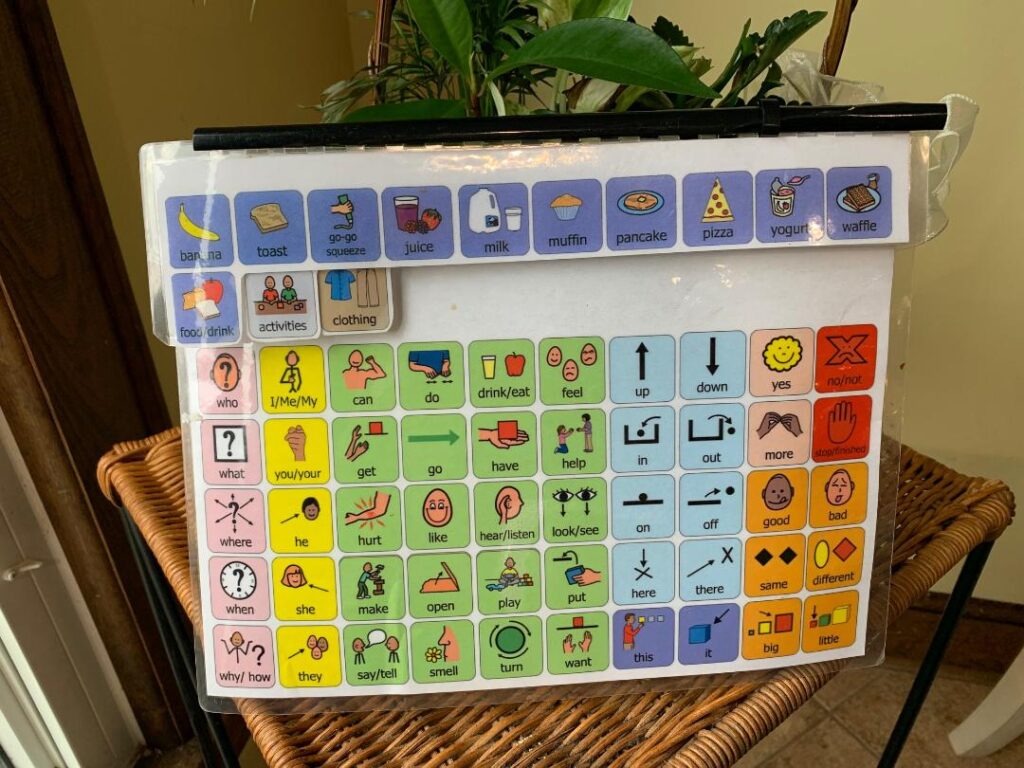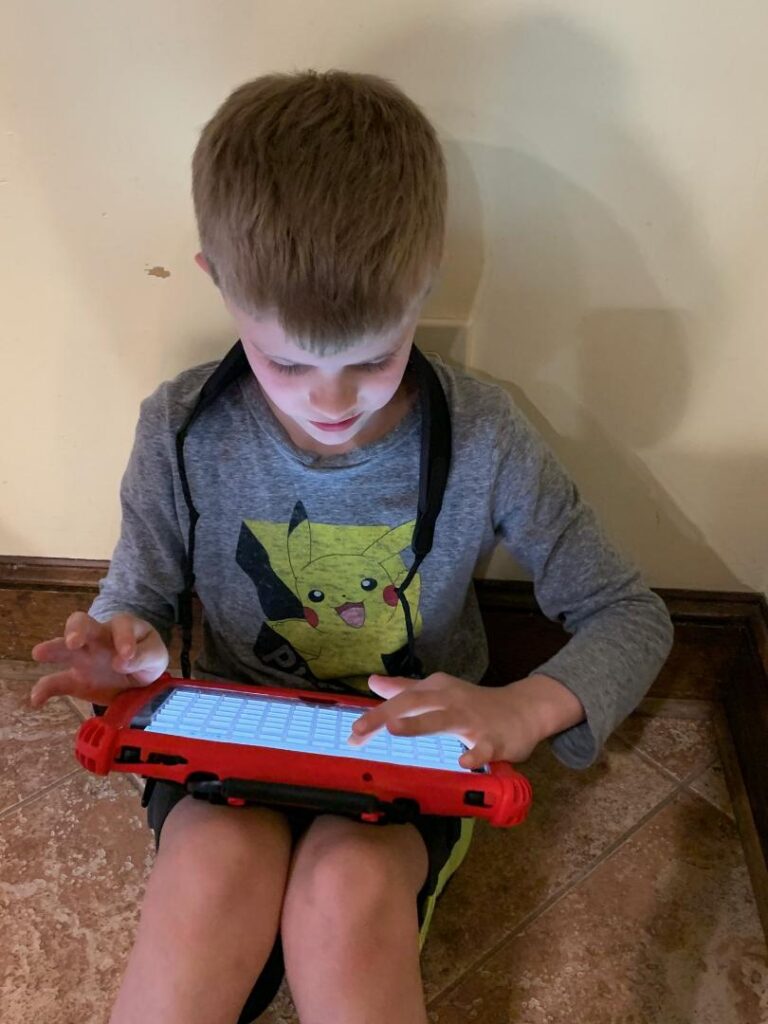What is Assistive Technology (Speech Devices)? How do I decide that my child needs one? Follow along with me

What is a Speech Device?
Good question. Up until about 2 years ago, I didn’t know either. Officially called Assistive Technology, a speech device helps a nonverbal person learn to communicate. It essentially ” speaks ” for the person using it. It is a gateway to open the communication for a nonverbal or minimally verbal person. According to the organization Autism Speaks, Assistive Technology helps people of all ages by encouraging communication, increasing independence, and giving opportunities for social interaction. In the autism world, assistive technology ( speech devices) is a key piece to removing the barriers to communication that often exist.
How We Discovered Assistive Technology.
About 2 years ago, before the COVID shutdown, Kam and Kris were working with their speech team at school. Using a system of pictures formally known as PECS (Picture Exchange Communication System), the twins could tap a basic picture chart. When using this, we ask them a question such as “What would you like to eat?” and the child taps the picture of a slice of pizza, toast, banana, etc. Both Kam and Kris quickly grasped the concept of this. We also had a measure of success with this at home and with our therapy techs.
After using this PECS method for a period of time, my phone rang. It was the adaptive technology department. Because the twins worked so well with PECS, the speech department reached out to the Adaptive Technology peeps, asking them to contact me and obtain permission to amend the IEP to evaluate the twins for readiness for assistive technology ( speech devices). I quickly agreed with a small measure of hope growing inside me. A speech device? Could it be possible for us to finally open up the world of communication to our little boys?

A common struggle when working with the school system is a little thing call the school calendar. It takes quite a bit of time to set up meetings, have the meetings, do the paperwork of the meeting etc. Then comes the summer, where absolutely nothing happens and school is out. This happened to us. About the time we got the evaluation complete and the recommendation made, summer hit. This delay cost us several months. By the time school was back in session, it took a few weeks for the AT person to come back and pick up where we left off. We still used the PECS where we could at home during this time. However, we are terribly inconsistent with all the other chaos of having 7 kids in the home, and the PECS is the unfortunate victim.
Our Adaptive Technology team also changed during this time as personnel also change quite frequently in the school system. Our new AT person happened to be quite an expert at matching up the boys to a program that can work for them. She actually had a contact person directly in the company who had another contact in my insurance company. Our behavioral medicine physician ( our autism specialist) provided the doctor’s order, and away we went to battle with our insurance coverage.
One thing that can be helpful to you if you have private insurance as we do is to remember that insurance isn’t all that willing to provide a speech device. Speech devices are considered Durable Medical Equipment (DME) . Our boys were both denied the first time we applied. The important thing to know ( and if you have an autistic child, you are used to fighting the battle) is to not give up. We fought our way through and our company supplier ( Pentrom or PRC ) actually contacted our insurance company. We were finally approved with our devices shipped out on December 31,2019. Hallelujah! Just in the nick of time before our insurance deductible kicked in for the new year 2020.
The Speech Devices Arrive
Fast forward a couple of months and we are so excited to use our devices. Alas, just when we got them up and running, COVID arrived, and shut down the schools. Delayed again, but armed with possibilities. Brandon and I signed up for parent training and learned to use the device on our own in the interim.
Our AT person chose a system called LAMP Words for Life. LAMP stands for Language Acquisition Through Motor Planning. The company supplier PRC billed our insurance for Accent 1000 devices, and the LAMP system is the software that is downloaded on our devices. As I mentioned previously, Brandon and I both participated in a training session that we signed up through online with the group AAC to learn how to use LAMP. We found the training extremely helpful.

The best advice here is that once your child gets his or her device, you must make it a priority to use it. We had adapted so much to gestures, a child leading us to what he wants, and/or crying that we first had to untrain ourselves and ask them to use the device to “speak” what they want.
I will say that 18 months and a couple COVID delays in, our speech devices have changed our world. It is an incredible difference to have your child “talk” to you. We are currently in the stage where they are learning to take their speech devices everywhere they go. Again, the parent training is important in this since a device is not useful unless the battery is charged and the device is available.
If you have a nonverbal or communication delayed child or adult, this is a gamechanger. Get your person a device. They are worth all the battle and paperwork it takes to get one.
I am listing the websites here for starting your search.
https://www.autismspeaks.org/tips-using-assistive-technology-devices
Leave a Reply